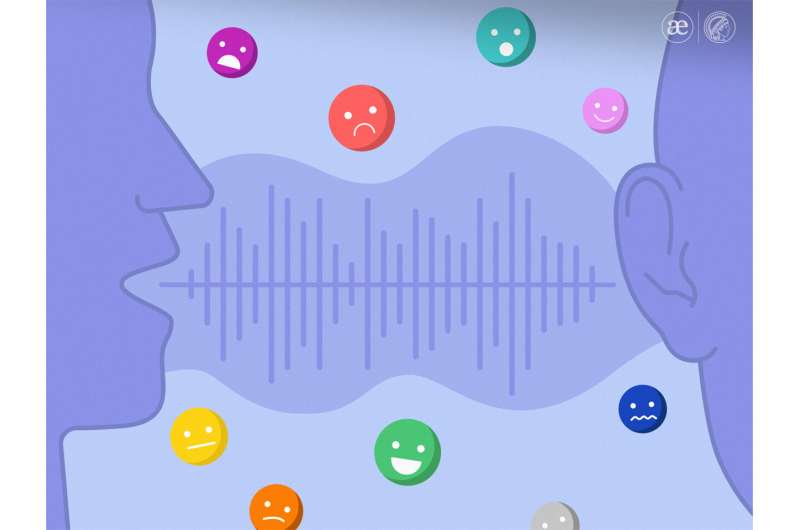This article has been reviewed according to Science X's editorial process and policies. Editors have highlighted the following attributes while ensuring the content's credibility:
fact-checked
peer-reviewed publication
trusted source
proofread
The sound of emotional prosody: A research review

People talk to share ideas, facts, and feelings. When we listen to someone speaking, it's not just about the words they say. The way they sound can also tell us a lot—for example, about the age, size, or even mood of the person speaking. This sound of emotional prosody has been studied for decades. An interdisciplinary team of researchers, including the Max Planck Institute for Empirical Aesthetics (MPIEA) in Frankfurt am Main recently published a review of the current state of research on this topic.
The article, published in the journal Perspectives on Psychological Science, serves as a guide to the extensive literature on emotional prosody, catering to both newcomers and researchers seeking updates.
A simple online search using the term "emotional prosody" yields more than a million results. This widespread interest is also reflected in the scientific literature, where countless articles emphasize the significance of prosody in several domains related to human communication, including clinical and pedagogical settings, as well as the increasingly prevalent human–computer interactions.
"Despite decades of research and some notable achievements, the link between acoustic features and emotional states still remains unclear," says first author Pauline Larrouy-Maestri of the MPIEA. "Our paper gives an overview of the continuous progress in the field and discusses directions to address the challenges in understanding how emotions are communicated through speech prosody."
In the article, the researchers highlight the challenges of emotions transported through speech prosody that have been identified in recent decades and propose specific research directions to address them. The aim is to deepen the understanding about the sound of emotional prosody and meet the growing demand for more detailed insights into how emotions are communicated through speech prosody.
More information: Pauline Larrouy-Maestri et al, The Sound of Emotional Prosody: Nearly 3 Decades of Research and Future Directions, Perspectives on Psychological Science (2024). DOI: 10.1177/17456916231217722



















